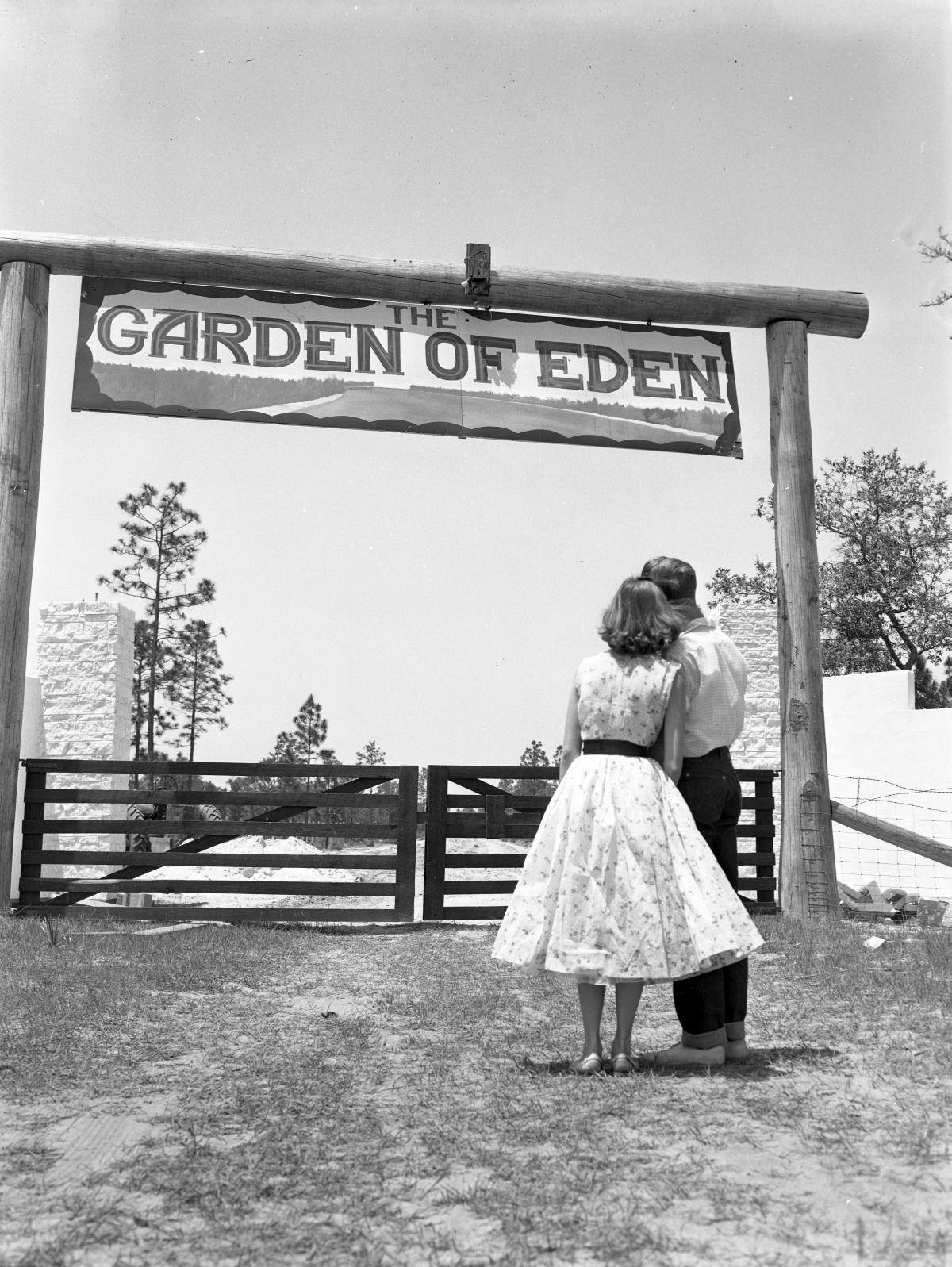
Couple at the Garden of Eden near Bristol, Florida – March 7, 1953 – Red Kerce Photographic Collection
By the time Benjamin L. ‘Red’ Kerce died from a heart attack at just 53 during a business trip to Orlando, he’d risen to the rank of director of press relations for the Florida Highway Patrol. A native of Union County, Red Kerce had lived in Tallahassee about 20 years, working as a writer and photographer for the Florida Times-Union, and as correspondent for several out-of-state dailies. He was chief of the Brevard County bureau of the Orlando Sentinel-Star for several years, with headquarters in Titusville.
Mr. Kerce was also employed by The Telegraph at the start of his newspaper career in the 1920s. He was married to the former Catherine Threlkeld of Titusville, and they had seven sons.
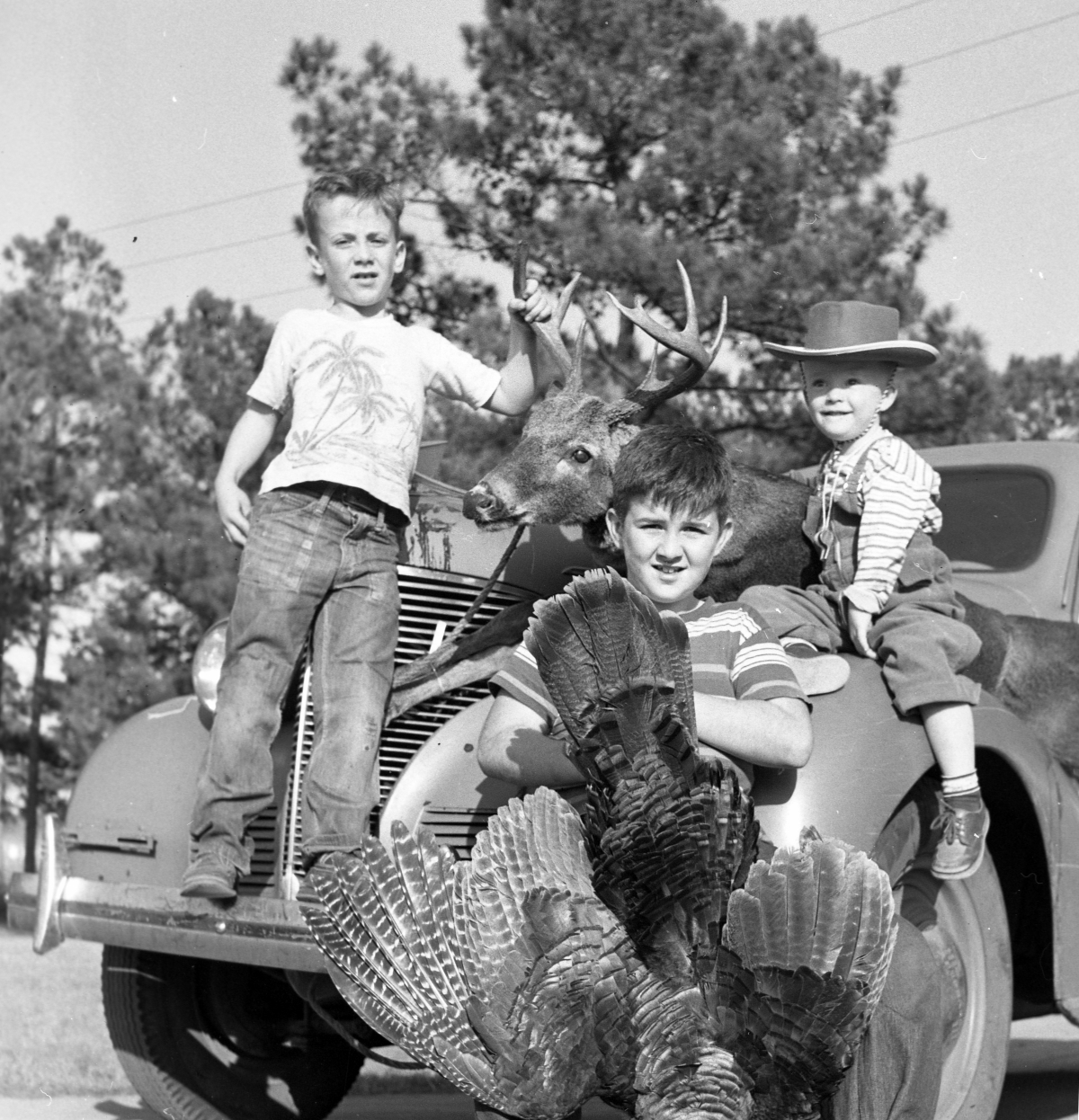
Clark children with deer and turkey from a successful hunt – Jan 9 1955 – Red Kerce Photographic Collection
Over 800 of his photographs of Tallahassee and the surrounding area are housed at the Florida State Archives. They give us a snapshot of the times, not least of all how the officials of law and order were on friendly terms with the Klu Klux Klan. I didn’t come to Red’s archive looking to write about race. But race infects every image. Portraits of the all-white, all male judiciary suited and booted for the lens; a bevy of all-white Senators’ wives smiling for their group photo; and the all-white police force enforcing the hierarchy of law and order that places blacks at the bottom, invite us to peep past the blinkers and see what we’re missing on the margins.
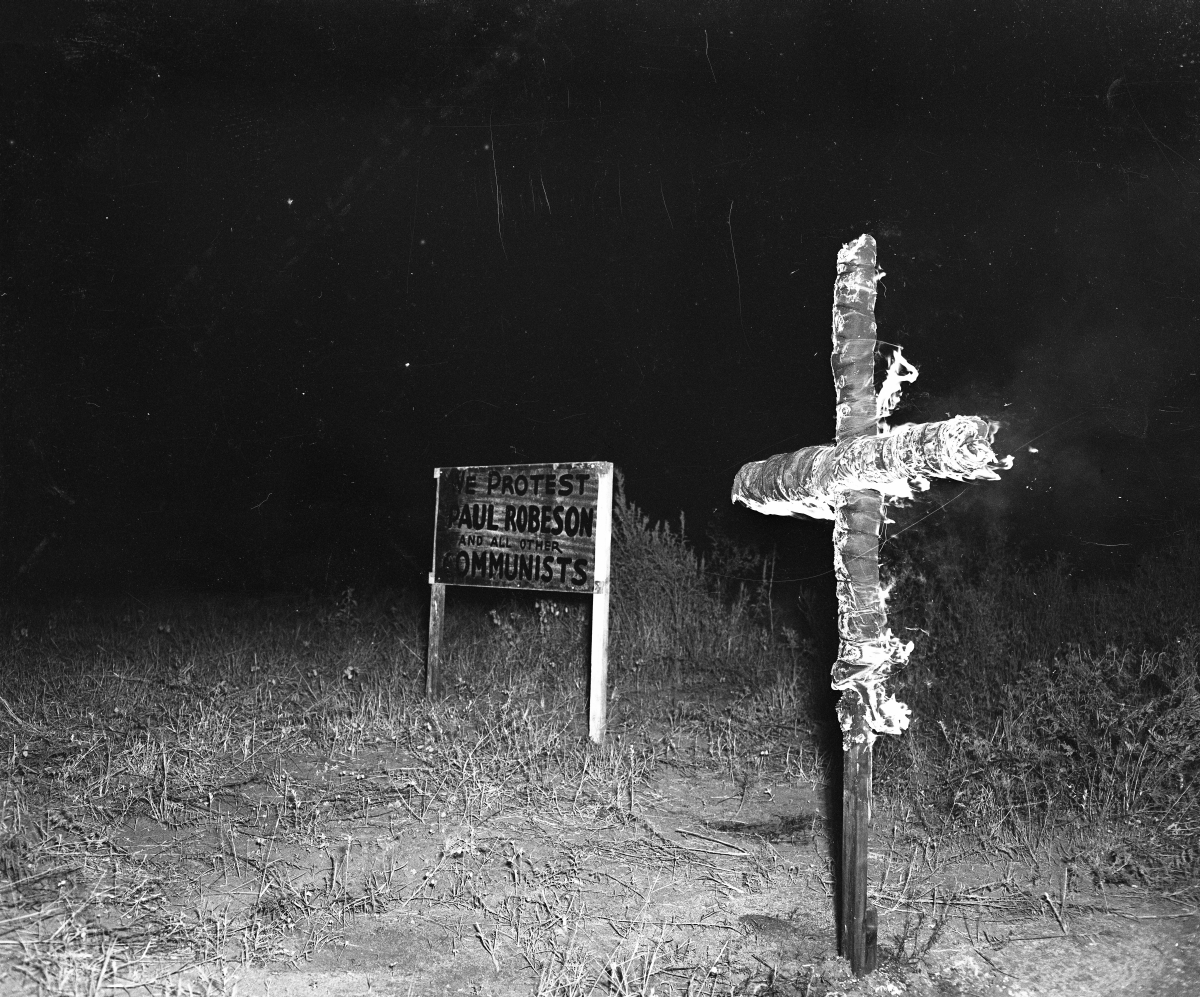
Cross burning by the Ku Klux Klan, in protest of a suspected communist – September 1 1956 – Red Kerce Collection
Red took many photographs of a KKK meet-and-greet cross burning staged on September 1 1956. In one image Mrs Kerce shares niceties with the robed white supremacy group. Police oversee parking and keep spectators away from the flames. The camaraderie between police and organised, murderous bigotry is plain.
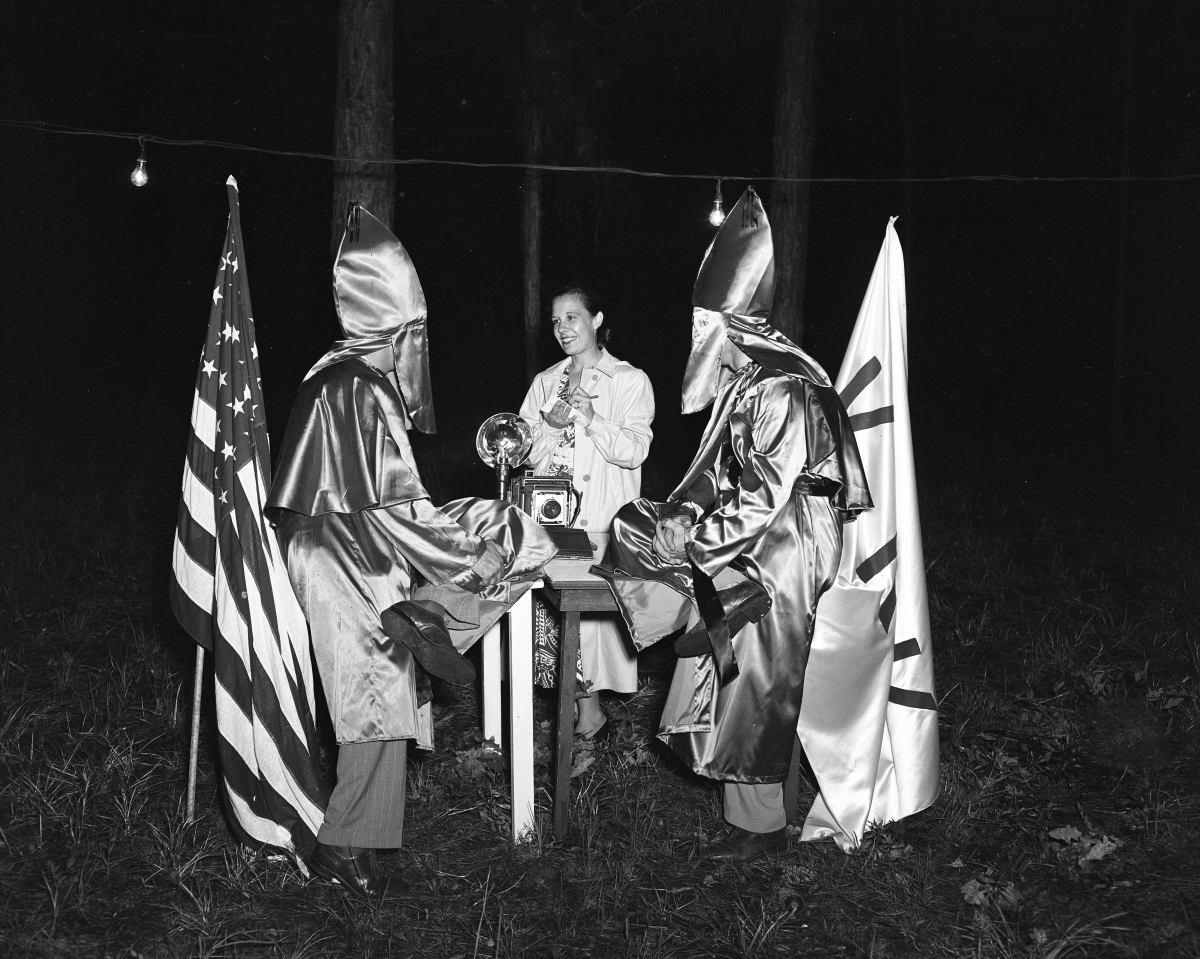
Ku Klux Klan officers in costume talking with the photographer’s wife Sarah Catherine Kerce, 1956 – Red Kerce Collection
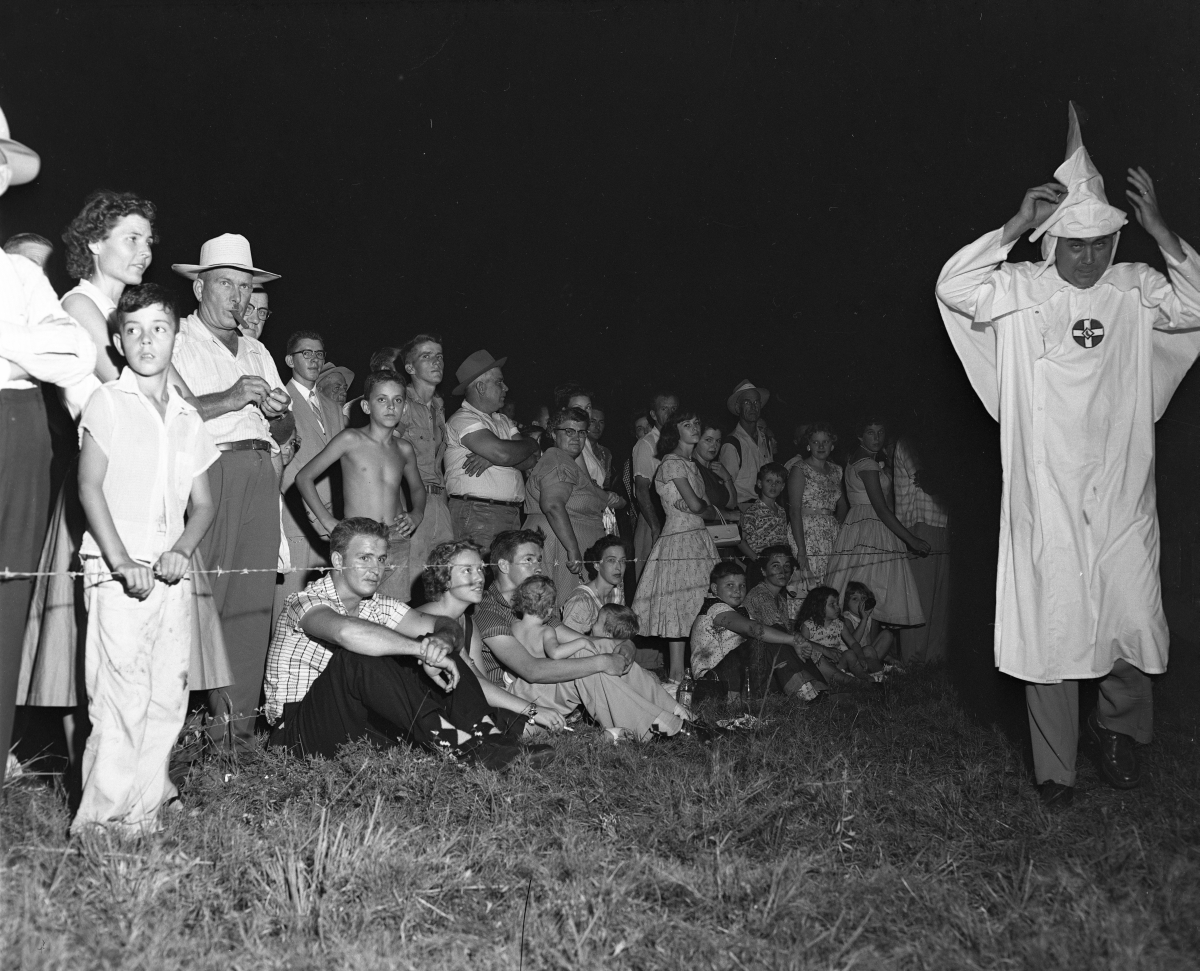
Crowd and Ku Klux Klan member at one of the Klan rallies – September 1 1956 – Red Kerce Collection

Ku Klux Klan members with flags, September 1, 1956 – Red Kerce Collection
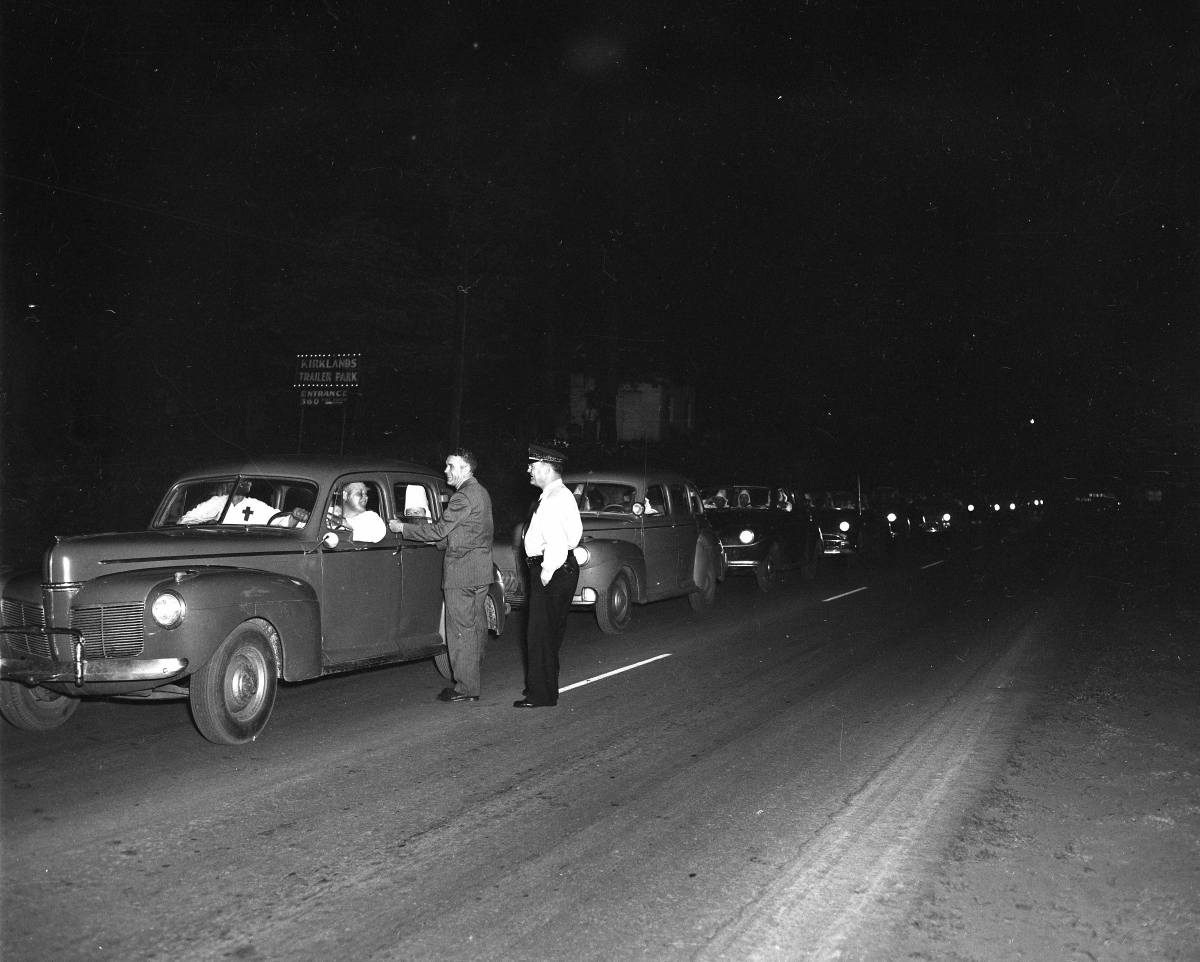
Ku Klux Klan in their cars and talking with men standing in the road, September 1, 1956 – Red Kerce Collection
“Welcome to Eden,” says the sign over the entrance to Republican candidate for governor Elvy Edison Callawa’s Garden of Eden Park. Callaway believed God created man in the delta of the Apalachicola river, which split into four rivers, just as the Bible describes four rivers leading out of Eden. You could visit Adam’s birthplace and take home a shard of the tree from which Noah built his ark. You could feel God’s embrace. But only if you were white.
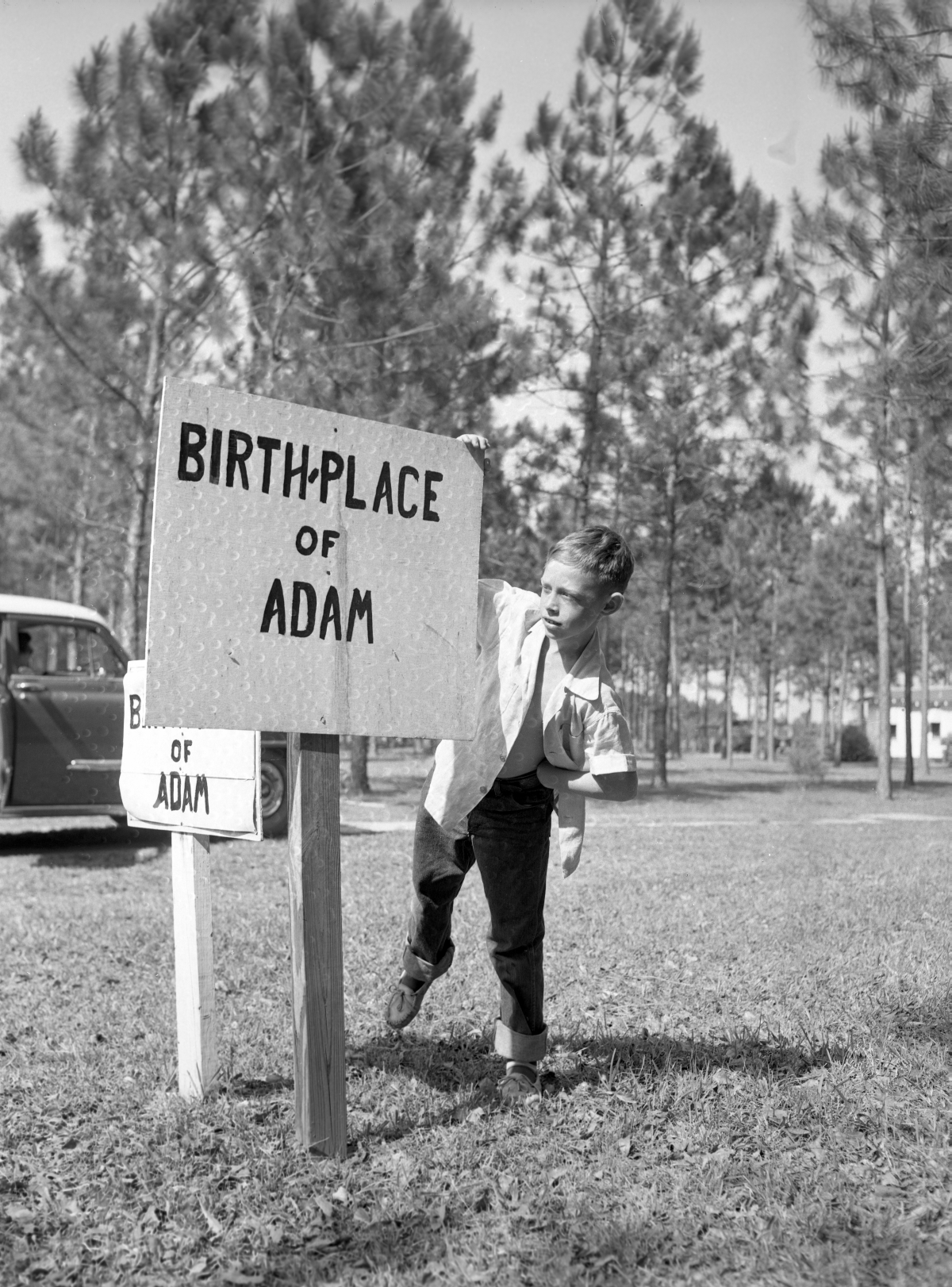
Joe Kerce reading sign marking the “birthplace of Adam” in the Garden of Eden – Red Kerce Photographic Collection
It’s noticeable, at least it is to our eyes some 60 plus years after, that down where the cotton blossoms grow the only black faces in the frames are serving whites. White women who might have thought they’d reached rock bottom with incarceration at the Florida State Prison at Raiford could look down on the black woman forced to serve their slops in the segregated prison. Hitler, Mussolini and Tojo were defeated. But the fervour with which many Americans fought for freedom overseas was not realized by all at home in the 1950s.
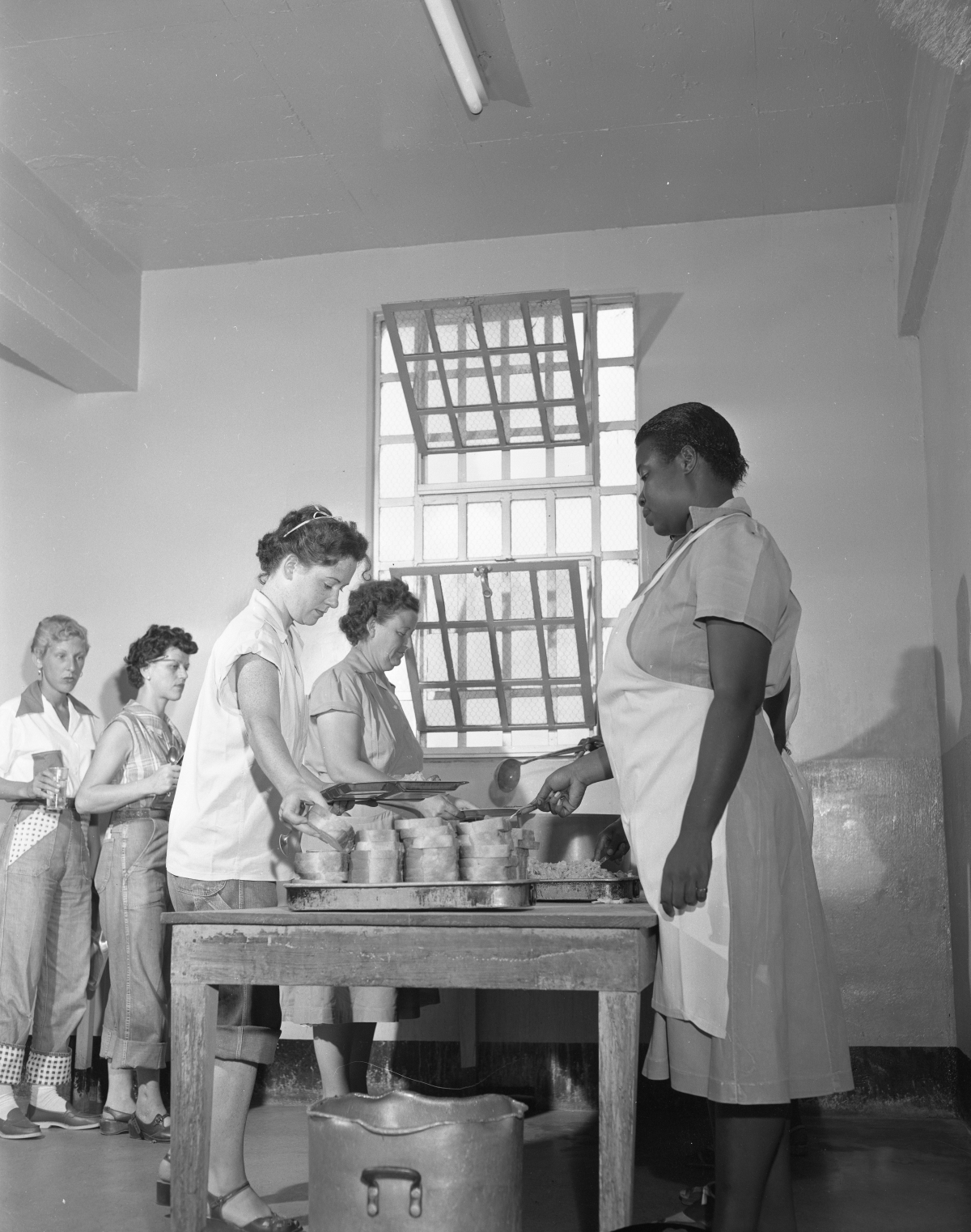
Inmates in the cafeteria at mealtime – September 8, 1954 – Red Kerce Collection
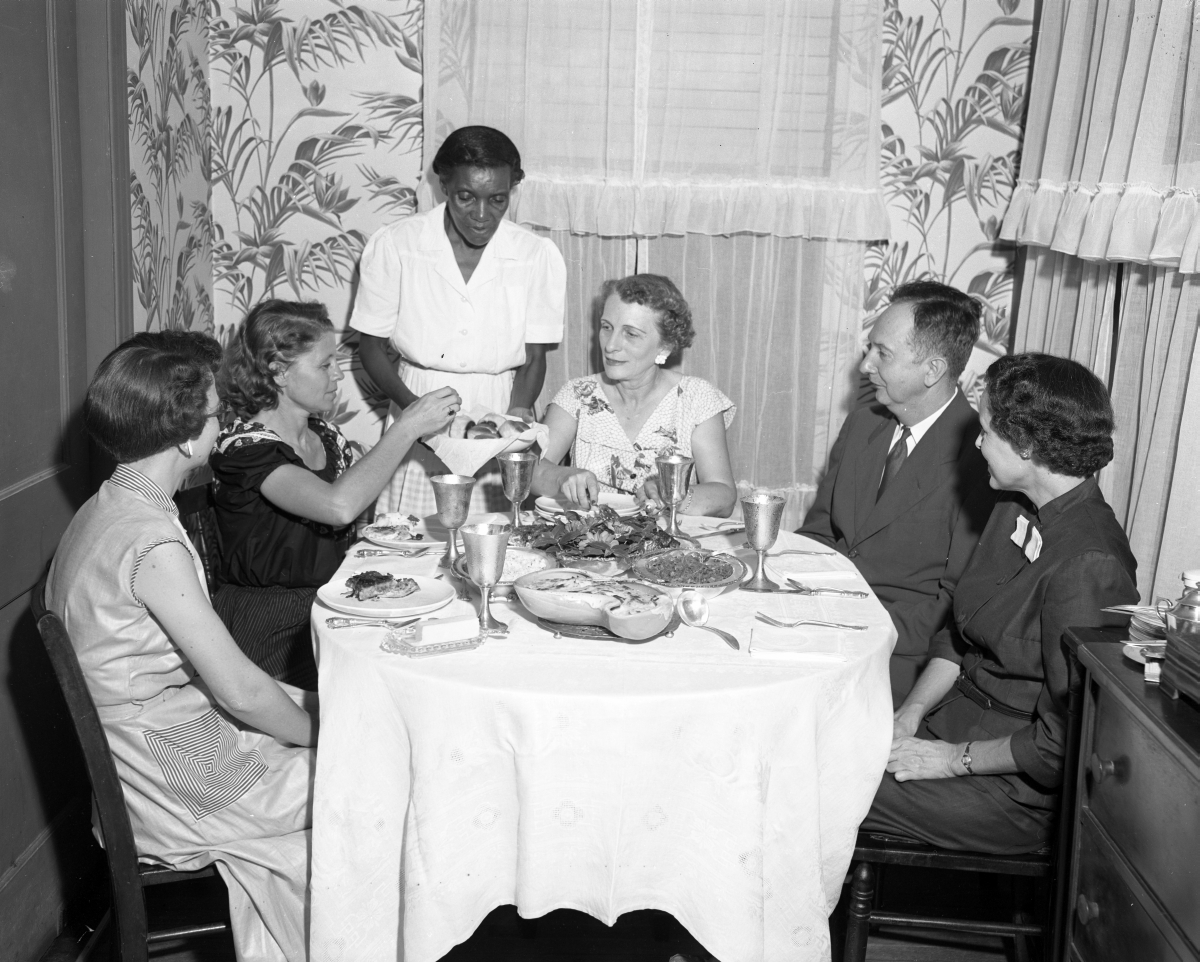
Lamar Bledsoe and others being served at a dinner party, August 1953 – Red Kerce Photographic Collection
The Civil Rights Act was passed in 1964, nearly 100 years after the end of the Civil War. The Act outlawed unequal application of voter registration requirements and racial segregation of public spaces. The combination of the Brown v. Board of Education decision, the Civil Rights Act of 1964, and the Voting Rights Act of 1965 ended the 89-year reign of Jim Crow.
…
On April 4, 1968, James Earl Ray assassinated Dr. Martin Luther King, Jr., civil rights activist and Nobel Peace Prize winner, in Memphis, Tennessee. In the ten days following this tragic event, riots erupted in over one hundred American cities. Up until this time, social scientists believed all rioting occurred in response to local events or dissatisfaction. This assassination proved that black awareness extended further than home boundaries. The rioting afterwards ‘was the first time that [Black] collective disorder was set off in response to a single, politically significant national event.’
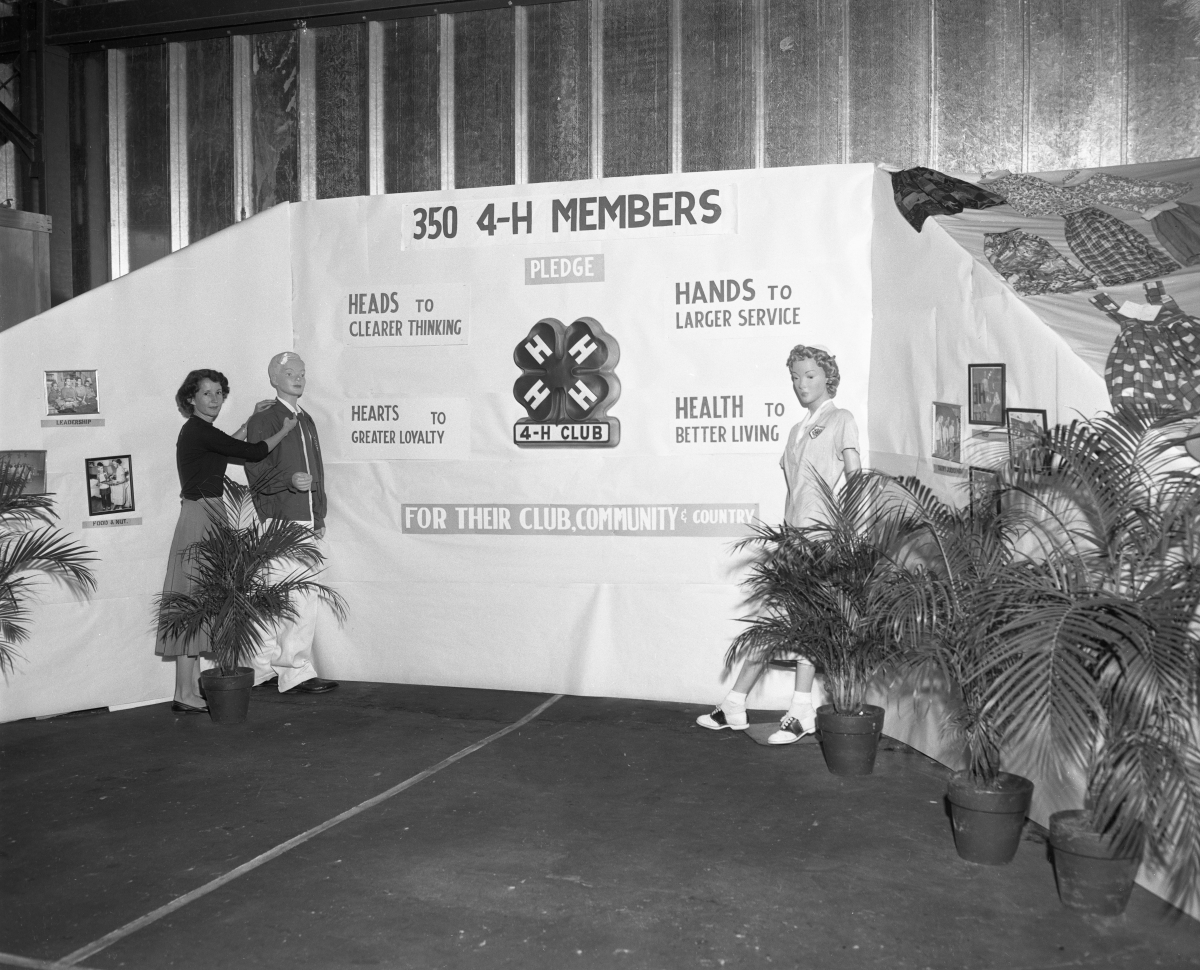
4 H club booth at the North Florida Fair, 1955 Red Kerce Collection

Children next to ice covered fence – Tallahassee, Florida. – March 27, 1955 by Red Kerce Collection

Conductor speaking with children in front of a stopped train – April 25, 1955 – Red Kerce Photographic Collection

Dennis Christie and salesman at a Tallahassee business – October 17, 1955
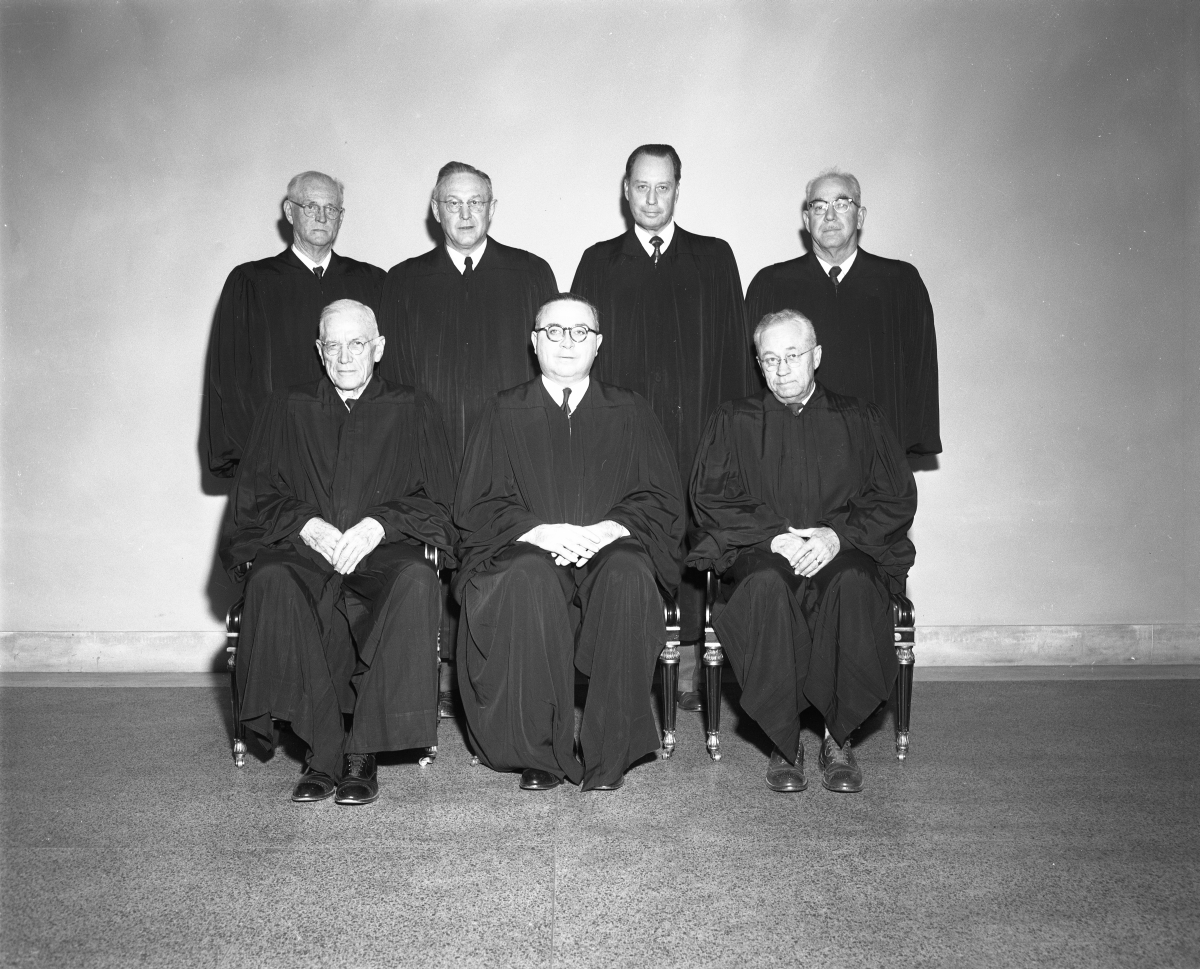
Florida Supreme Court Justices – Jan 13, 1954
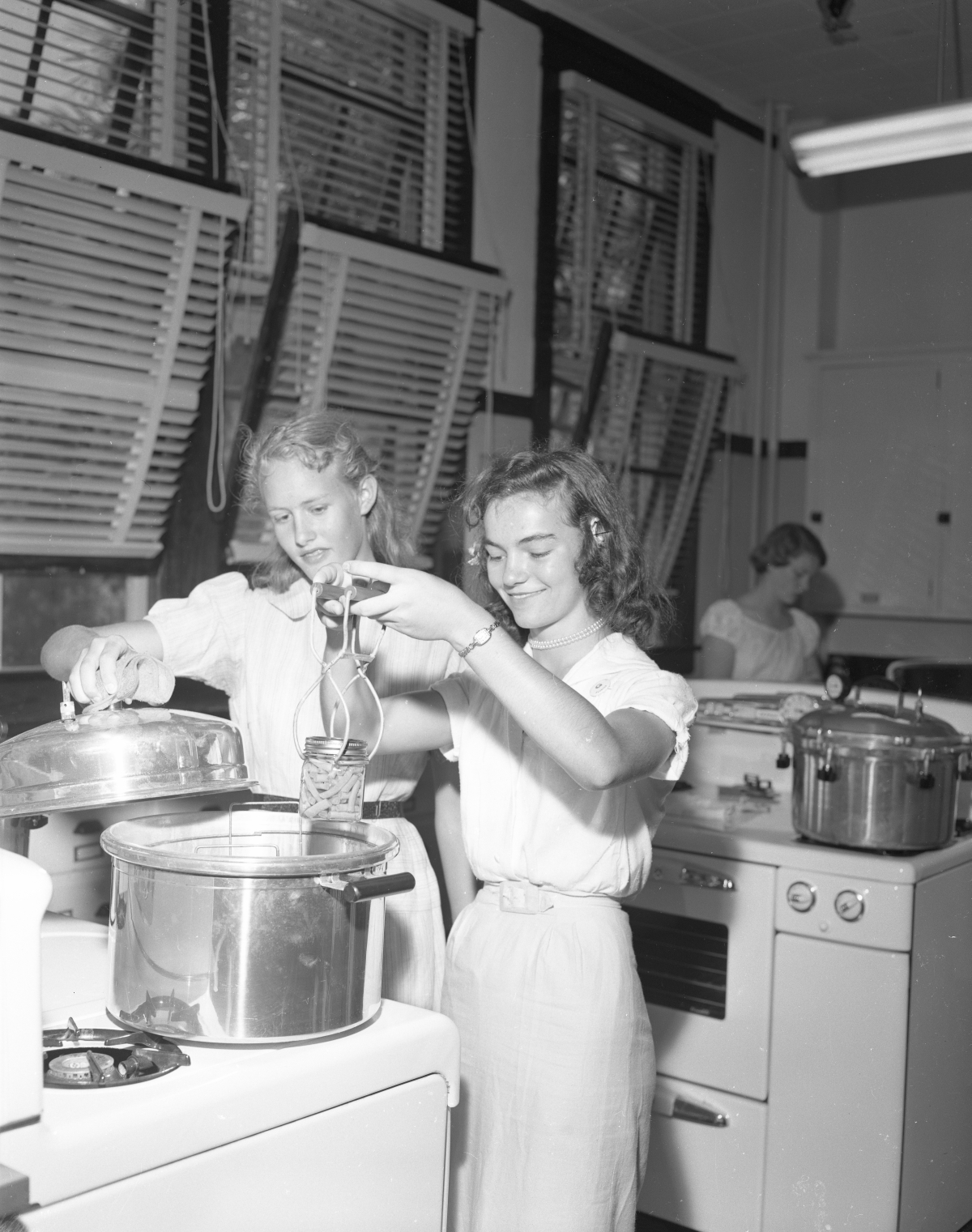
Cooking class – learning to can, 1954 – Red Kerce Collection

Dead lake with cypress knees, 1955- Red Kerce Photographic Collection
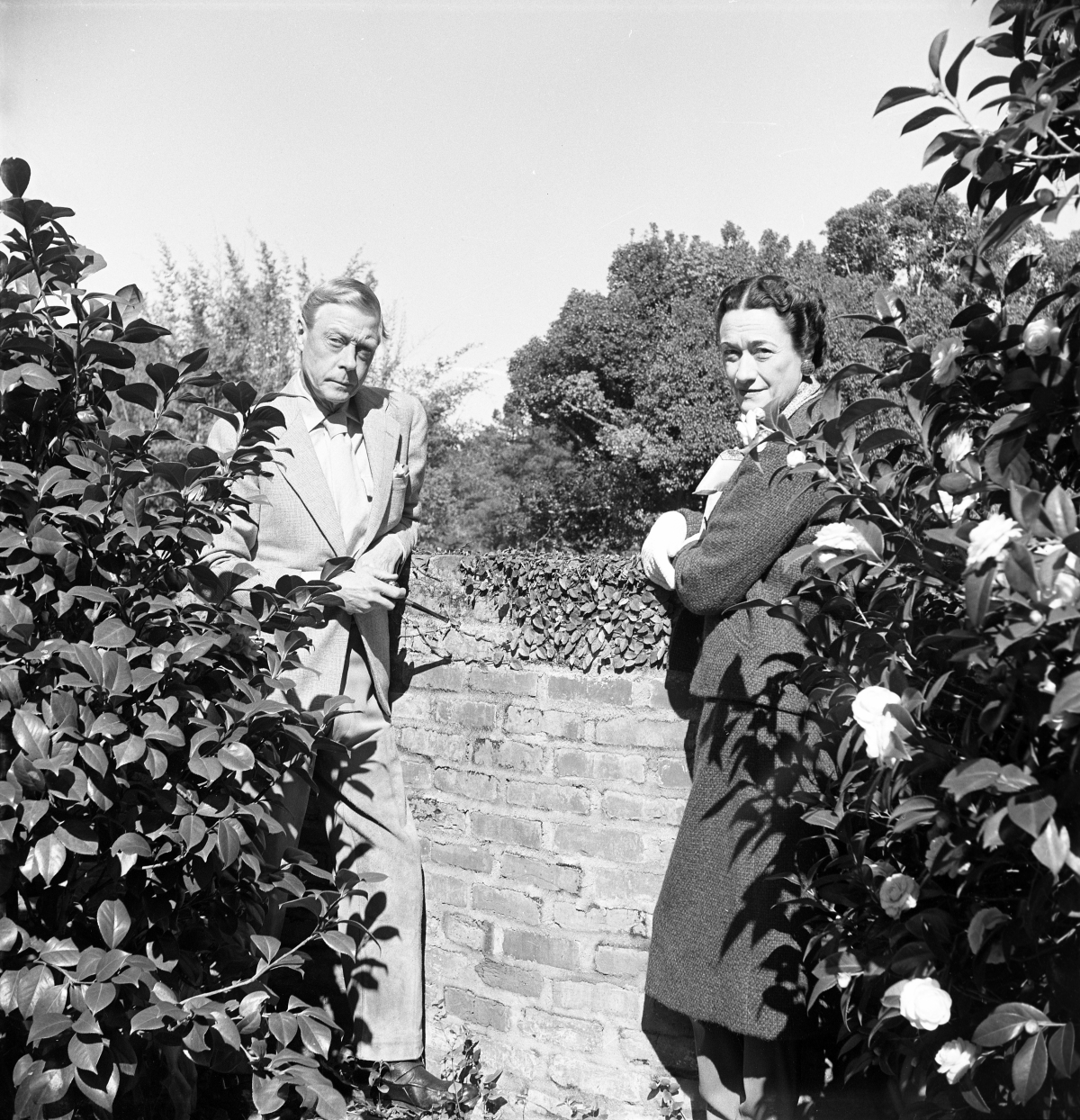
Duke and Duchess of Windsor visiting in Tallahassee, 1953 – Red Kerce Photographic Collection
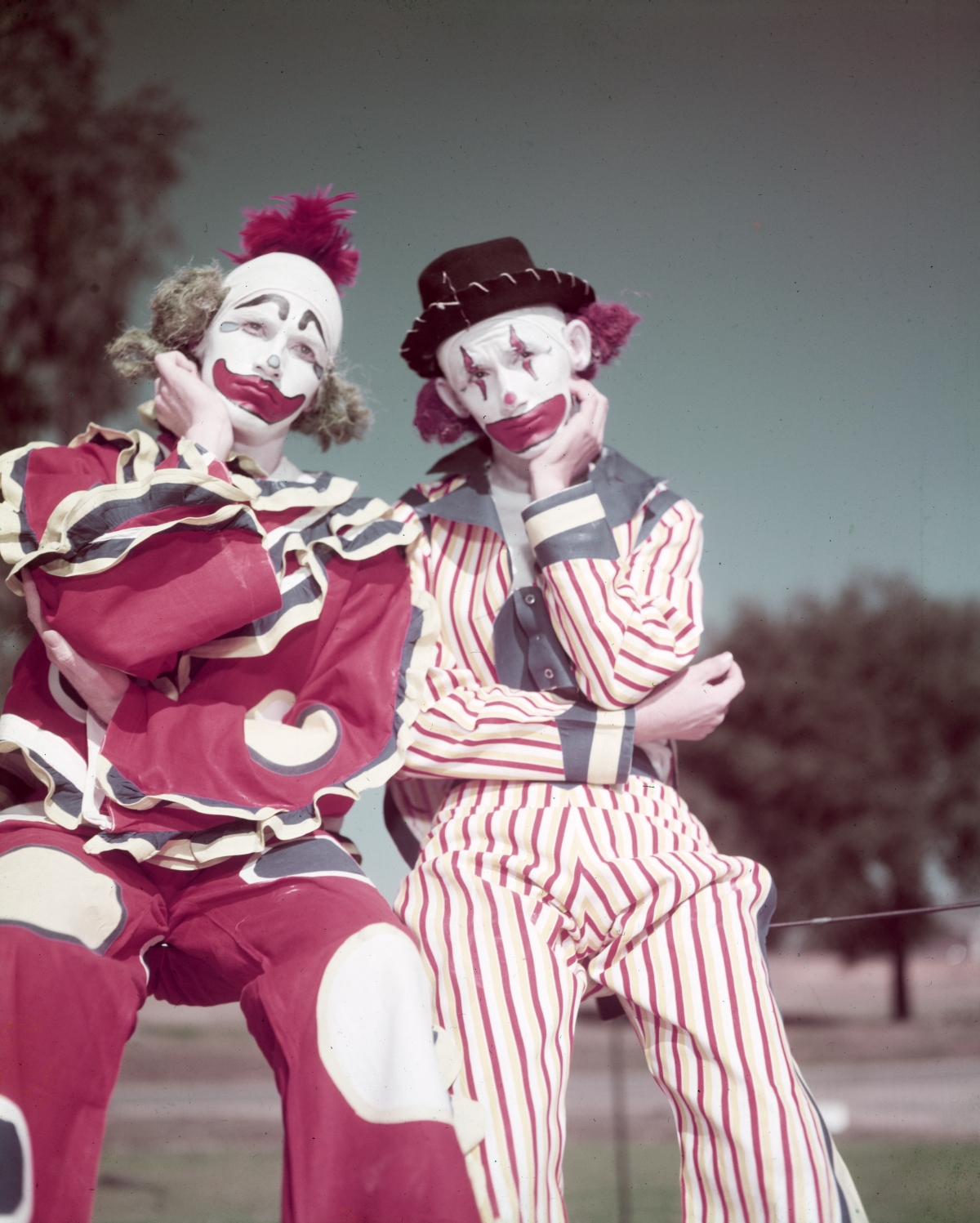
lorida State University Flying High Circus performers dressed as clownsRed, 1950 – Kerce Collection
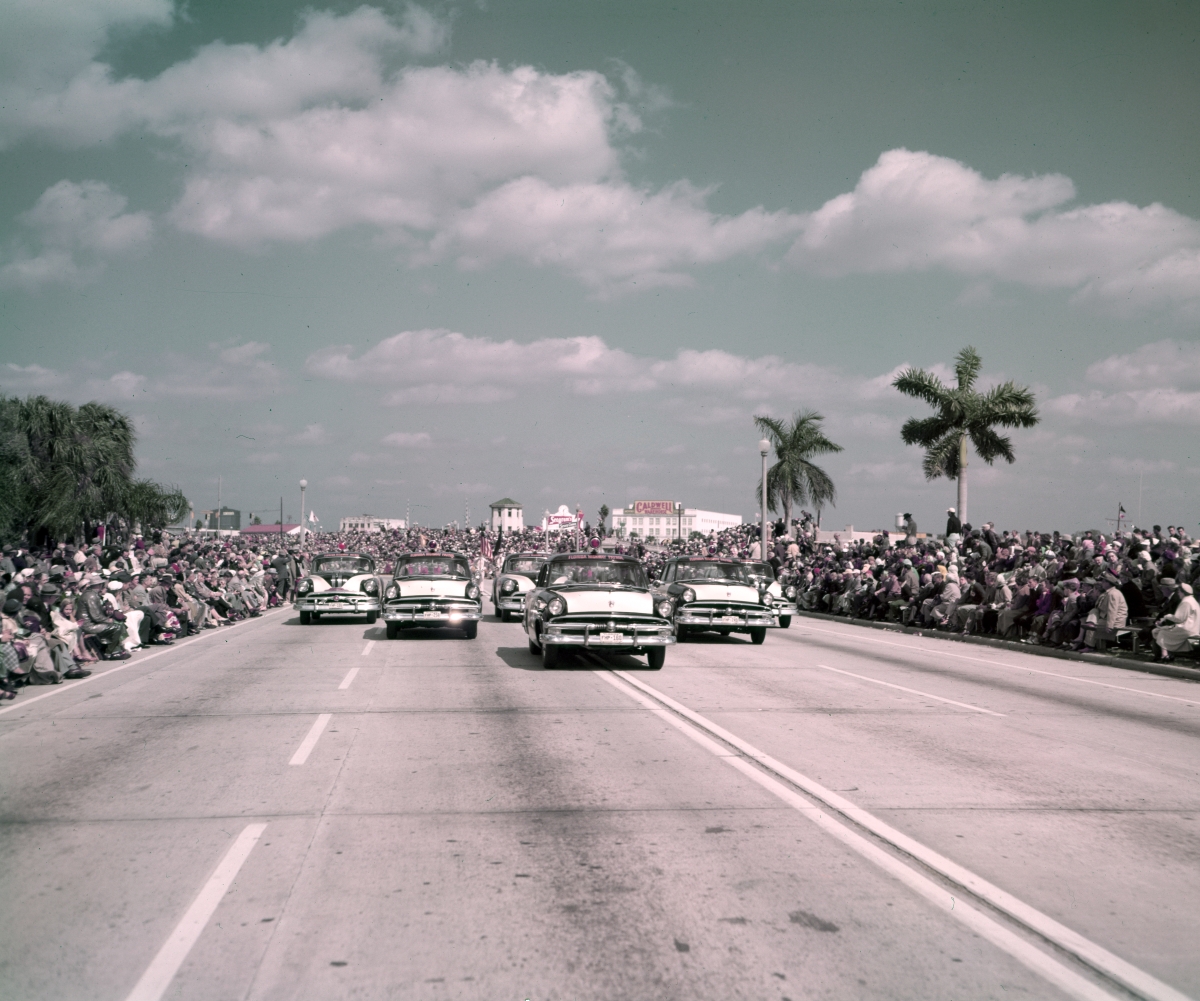
Highway patrol cars in the Tampa Gasparilla parade, 1954 – Red Kerce Photographic Collection

Inmates in the cafeteria at mealtime – September 8, 1954 – Red Kerce Collection
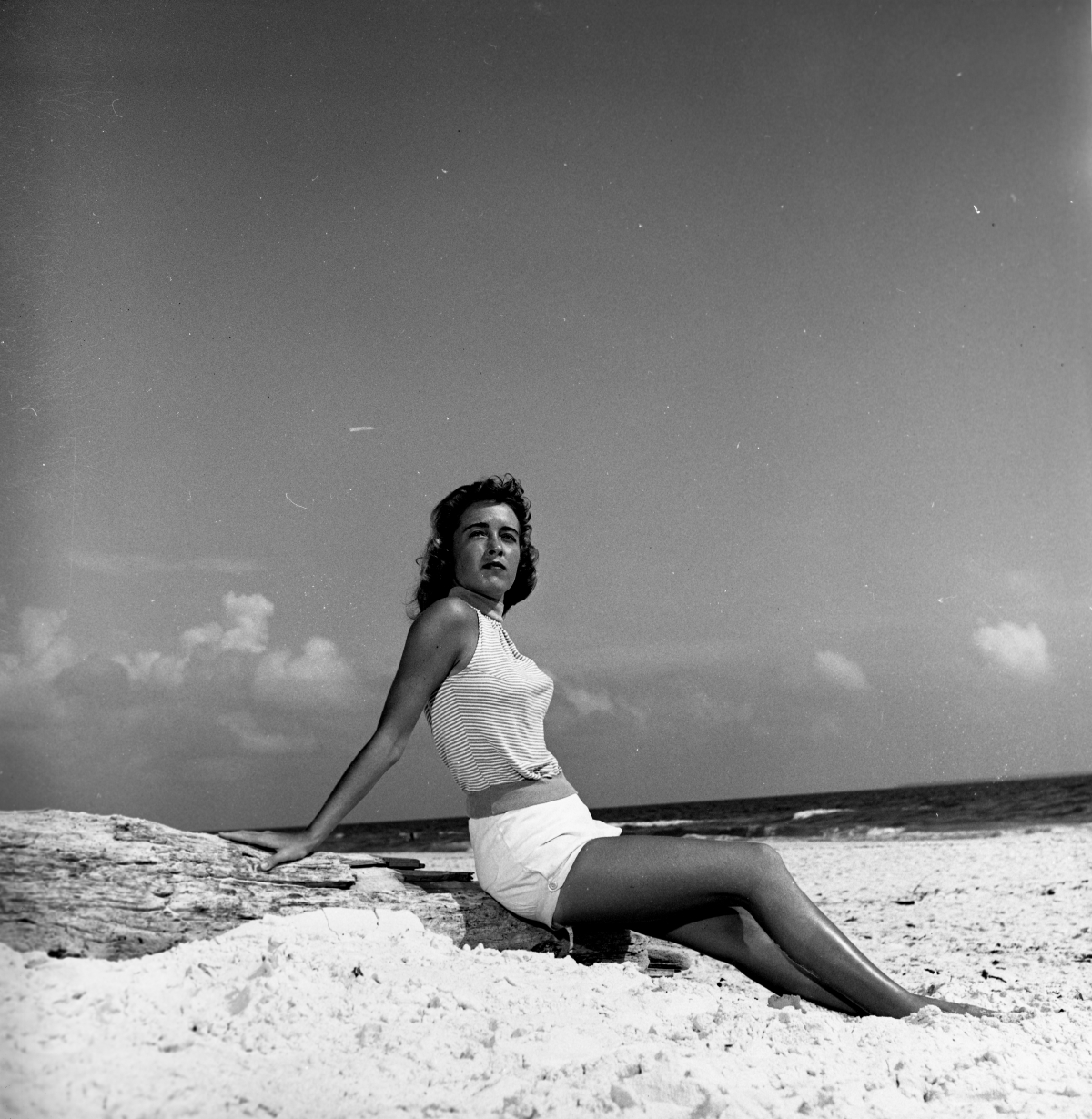
Kay Cromartie modeling bathing suits, May 14, 1955- Red Kerce Photographic Collection

Kerce brothers with arrowheads and spear points, 1950 – Red Kerce Photographic Collection
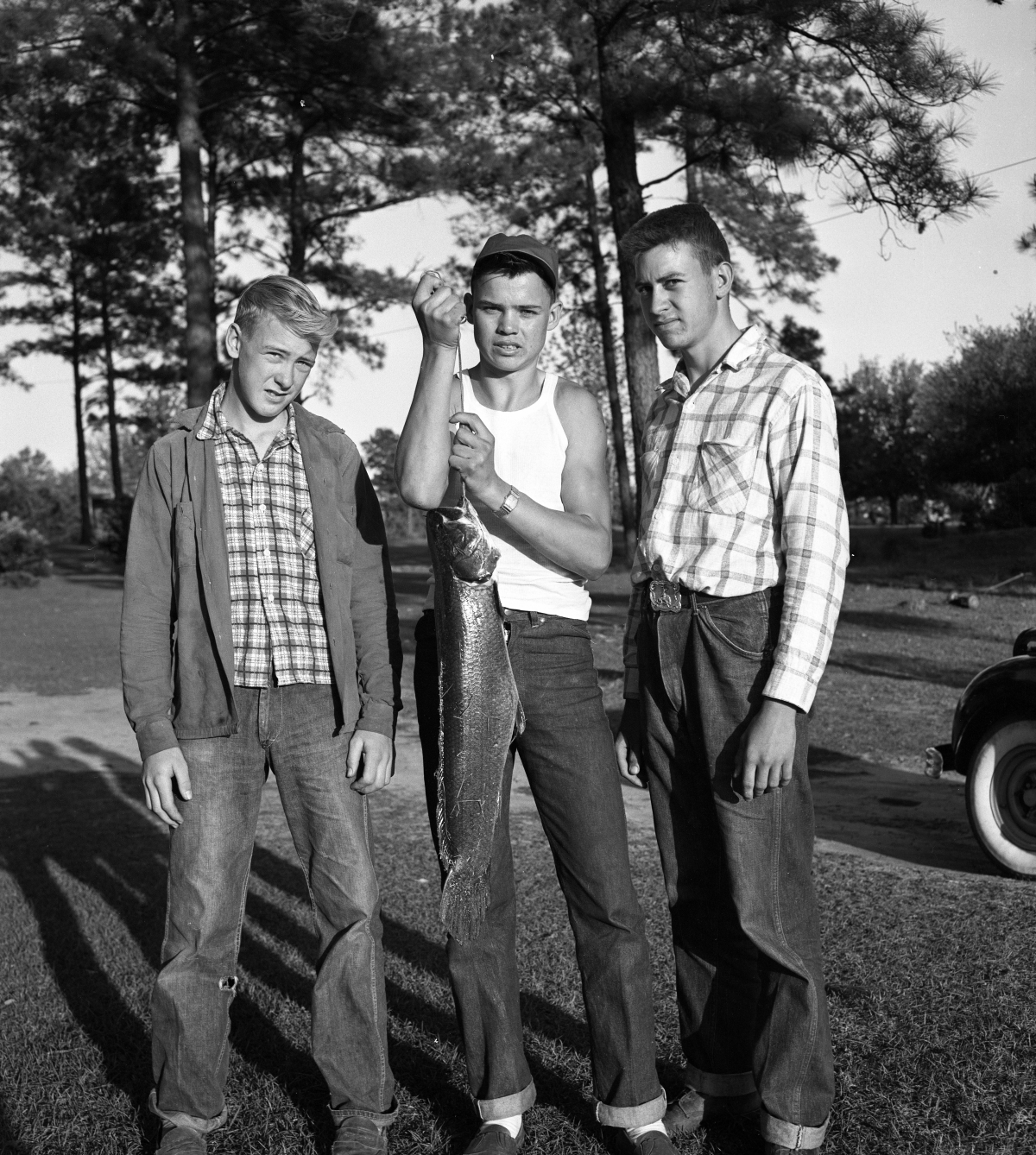
Davis boys with fish – April 4 1955 – Red Kerce Photographic Collection
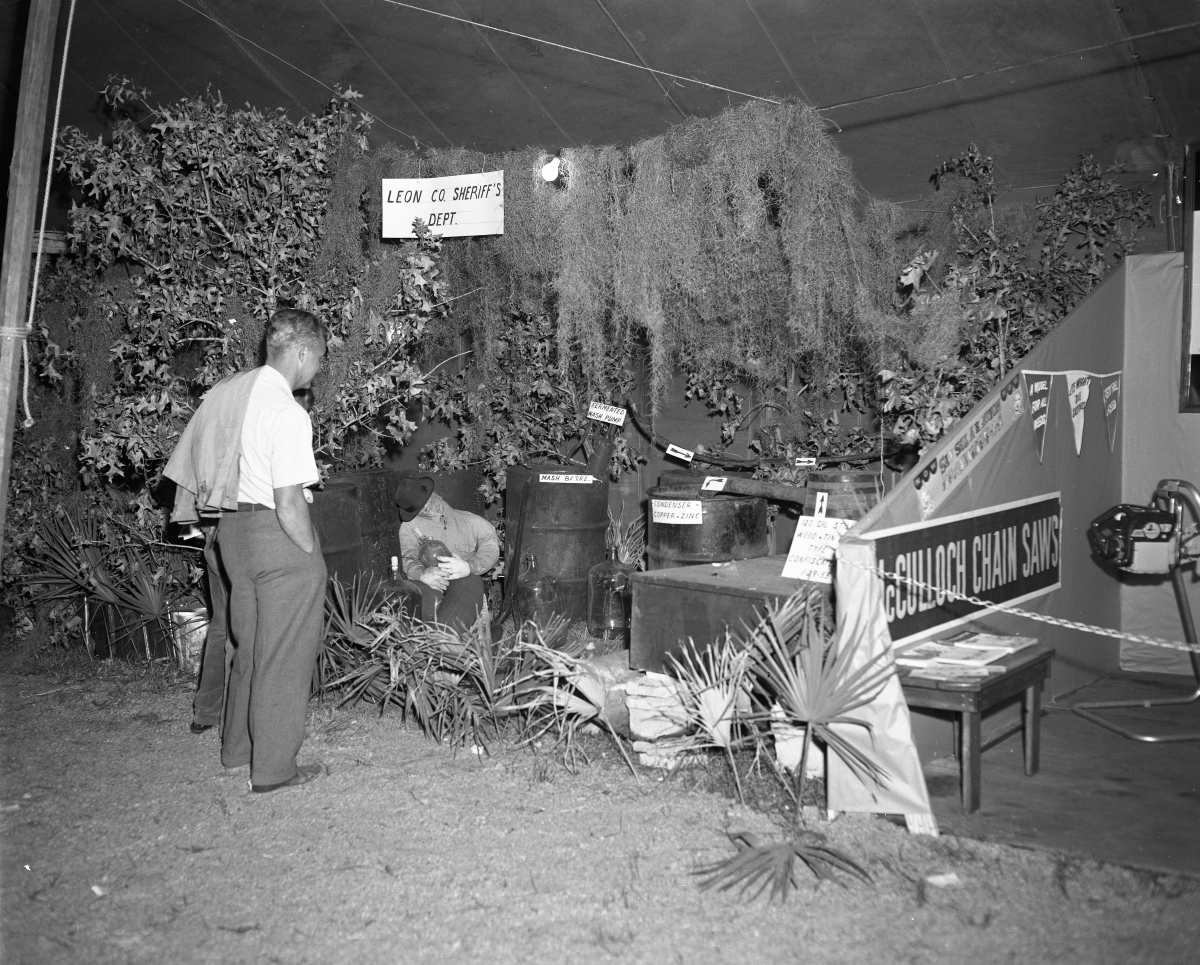
Leon County Sheriff Department’s exhibit on moonshine, 1955- Red Kerce Collection
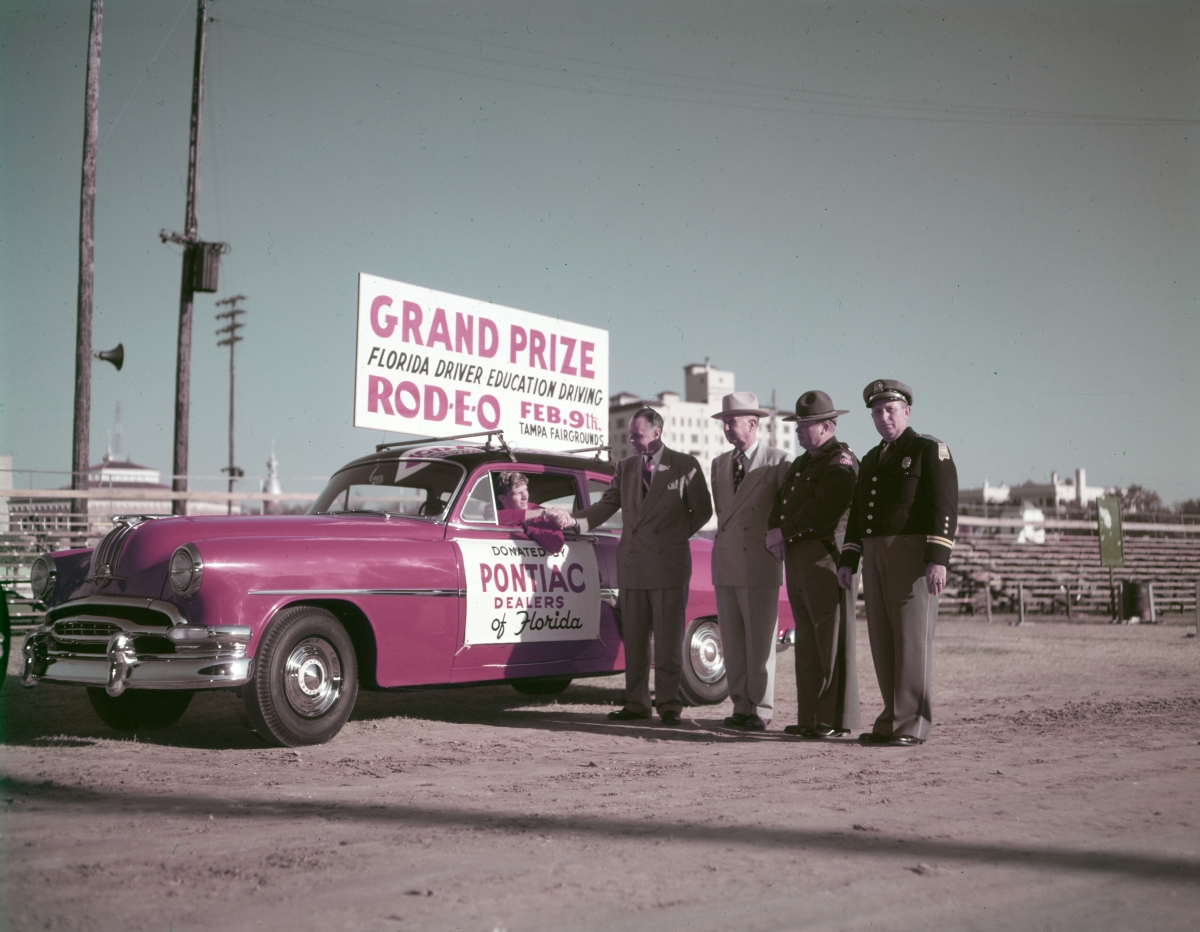
Pontiac prize car for Florida Driver Education Rodeo – February 1954 – Red Kerce Photographic Collection

Senators’ wives, 1954 – Red Kerce Photographic Collection

4 H club booth at the North Florida Fair, 1955 Red Kerce Collection
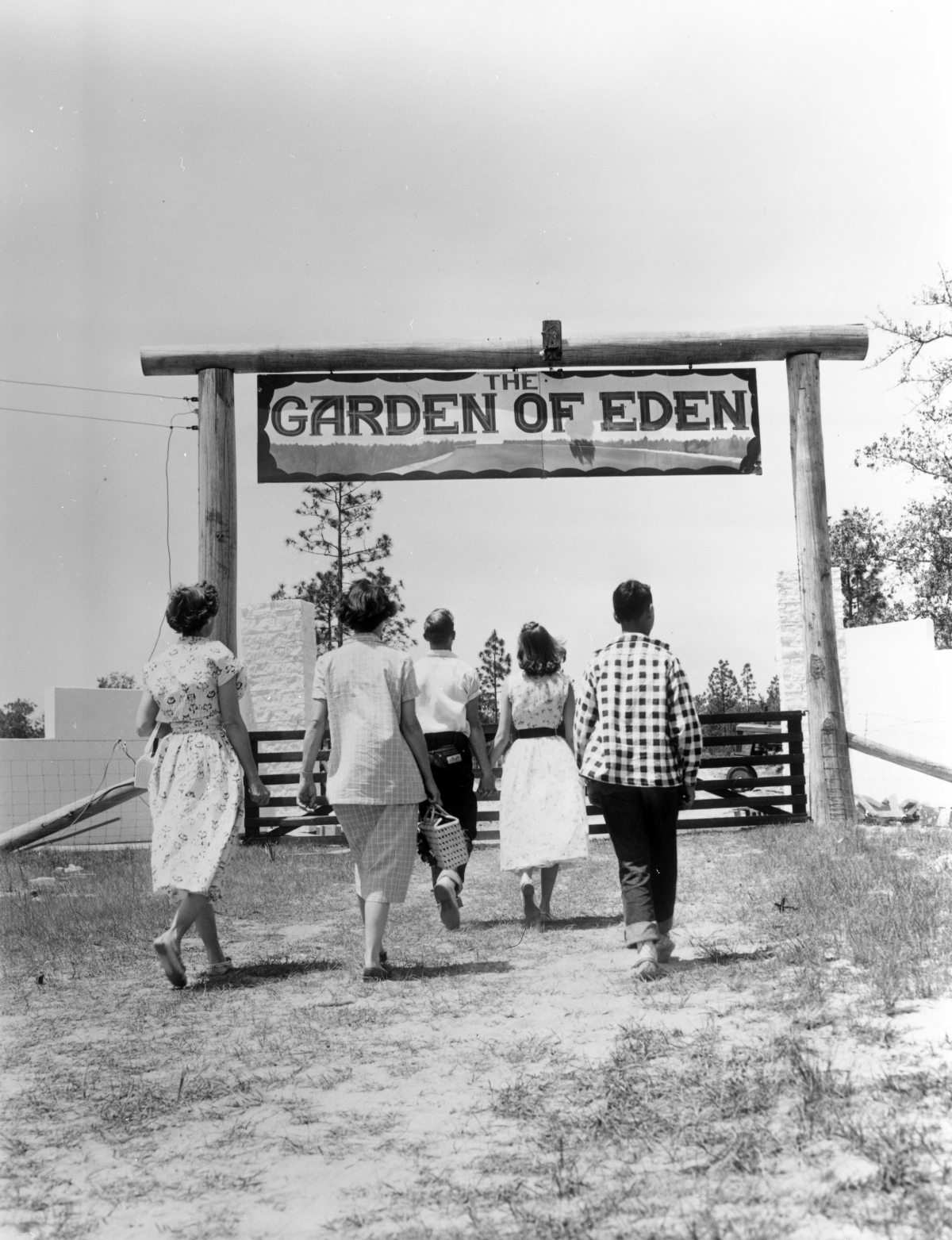
Would you like to support Flashbak?
Please consider making a donation to our site. We don't want to rely on ads to bring you the best of visual culture. You can also support us by signing up to our Mailing List. And you can also follow us on Facebook, Instagram and Twitter. For great art and culture delivered to your door, visit our shop.

